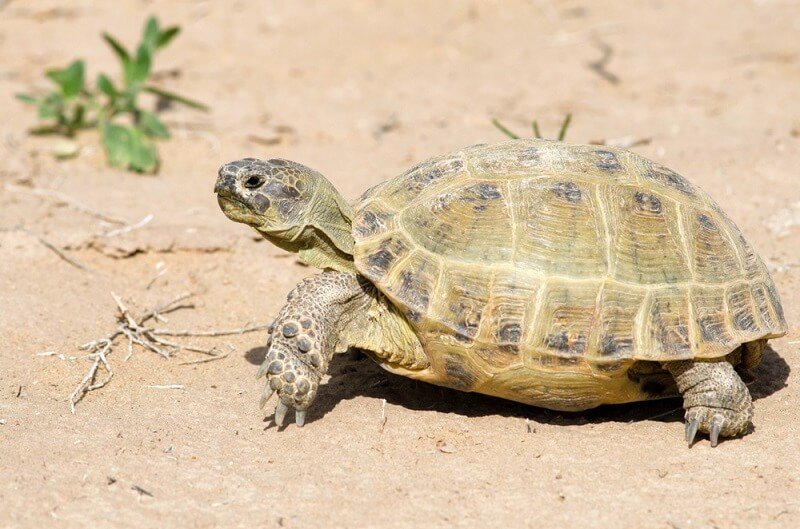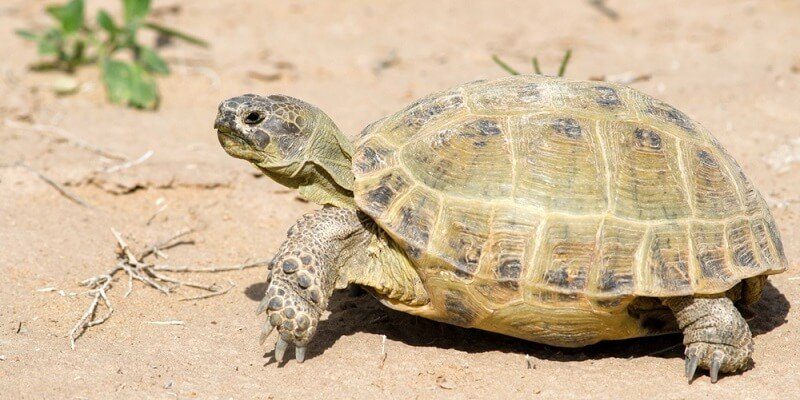
Now, let’s dive into the world of Russian tortoises to uncover where they are found around the globe. Imagine exploring rugged landscapes where these tortoises thrive, learning about their natural habitats, and understanding how they fit into the ecosystem. Buckle up, because we’re about to embark on an enlightening journey!
Origin of the Russian Tortoise
Russian tortoises, scientifically known as *Testudo horsfieldii*, are native to the grassy steppes and semi-desert regions of Central Asia. Countries like Kazakhstan, Turkmenistan, and Uzbekistan are where you’ll find these tough little guys basking in the sun. Think of their habitat as a nature’s playground designed just for them—sturdy shrubs, arid landscapes, and rocky terrains that provide both food and shelter.
Interestingly, these tortoises have a unique way of coping with their environment. They are well-suited for hot, dry climates, and they have a great ability to burrow into the ground to keep cool. That’s right—they’re the ultimate survivalists! The adaptability of Russian tortoises is one of the reasons they’ve become so popular among pet enthusiasts.
The Spread of Russian Tortoises
Over the years, the popularity of Russian tortoises has led to their introduction to various regions outside their natural habitat. You might find them in different parts of Europe, North America, and even Australia! Their resilience and adaptability have allowed them to thrive in diverse settings, although it’s essential for owners to replicate those arid conditions to keep them healthy.
In places like the United States, Russian tortoises are commonly kept as pets. Enthusiasts strive to create home environments that resemble their natural habitats. This involves providing them with adequate space, heat, and a diet that includes plenty of leafy greens. It’s fascinating how a pet can transport you to a part of Central Asia if you think about their origins while gardening for their favorite snacks!
Natural Habitat Characteristics
When discussing where Russian tortoises are found, it’s crucial to understand their natural habitat, as it shapes their behavior. These tortoises thrive in grasslands and scrublands that offer a mix of sun and shade. Picture them wandering through fields dotted with low shrubs and dry grasses—this is their ideal setting.
In the wild, Russian tortoises are primarily herbivorous, munching on a variety of plants, including dandelions and clover. They also have a remarkable ability to find moisture in the environment, which is essential for their survival. By digging burrows, they create safe zones where they can escape the harsh sun and stay hydrated. This underground world is like their secret haven!
Conservation Status
Sadly, the natural populations of Russian tortoises are under threat due to habitat destruction and poaching. As urban areas expand and agricultural lands increase, these tortoises are losing their homes. This is concerning not just for the tortoises but for the ecosystems they support. Their decline can affect the balance of plant life in their habitats, which in turn impacts other species.
Conservation efforts are being implemented to help protect their natural environments. Many organizations are working to raise awareness about the importance of preserving these unique habitats. By prioritizing conservation, we can ensure that future generations can admire and cherish these resilient creatures just like we do today.
Russian Tortoises as Pets
Keeping a Russian tortoise can be a rewarding experience, but it’s essential to understand their needs to ensure they thrive. If you’re thinking about adopting one, you’ll want to create an environment that mimics their natural habitat as closely as possible. This means offering them a spacious enclosure with access to both sun and shade, along with a diet rich in leafy greens.
Moreover, it’s interesting to note that these tortoises can live a long time—some even reach over 50 years! This longevity means you’ll be in for a long-term commitment. However, seeing them grow and thrive in your care can be incredibly fulfilling. They have quirky personalities and can even recognize their owners, adding a delightful dynamic to pet ownership.
Global Distribution of Russian Tortoises
As mentioned earlier, Russian tortoises have spread beyond their native regions to various parts of the world. In Europe, they can be found in countries such as Greece, where they roam in wild areas. In North America, particularly in the United States, they are popular pets, with many turtle enthusiasts caring for them in home settings.
Additionally, some regions have seen them introduced into semi-wild settings. Being such adaptable creatures, they often thrive in these new locales; however, the ecological balance is crucial. Careless release of pet tortoises into the wild can create challenges for local ecosystems, which is why responsible care and knowledge are key.
In summary, Russian tortoises have a rich history rooted in the arid landscapes of Central Asia, and their adaptability has allowed them to thrive beyond their native regions. From natural habitats brimming with flora to cozy pet homes, these tortoises truly are remarkable creatures. As we learn more about where they are found around the world, we can appreciate their uniqueness and the importance of conserving their natural environments.
Honestly, whether you’re fascinated by their journey from wild habitats to living rooms or considering one as a pet, there’s so much to admire about Russian tortoises. They remind us of the beauty of nature, the importance of conservation, and the joy of companionship. So, here’s to these little wanderers—may they continue to enchant us for years to come!

